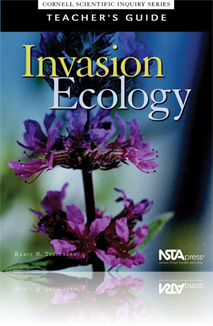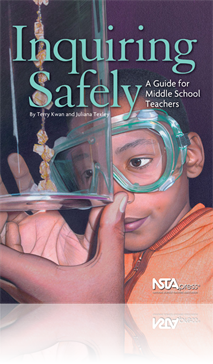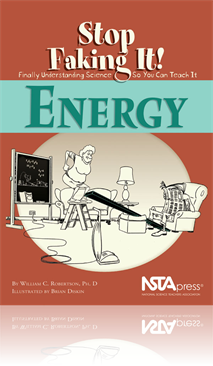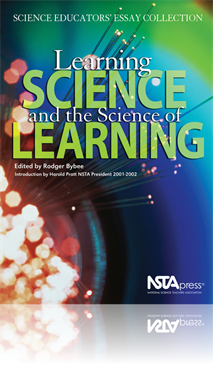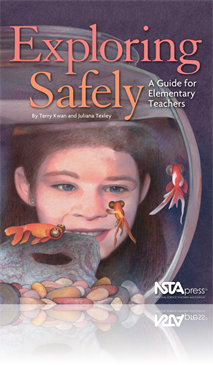All Book Chapters
Book Chapter
Why Ecology of Invasive Species?
Students may think of ecologists as people who pick up trash and protest for a cleaner environment. In this book, the term ecologist is used to refer to scientists who study ecology—the study of relationships among organisms and between organisms a...
Book Chapter
Invasion Ecology Protocols—Introducing Research
This section is designed for students to learn some of the basic principles of ecology and how they can be applied to studying and managing invasive species. It will also help students experience some of the ways in which scientists work together to ...
Book Chapter
Beyond Protocols—Conducting Interactive Research
This section provides instructions for two research projects that students have carried out in cooperation with Cornell scientists and these projects could be of interest to other students. It also suggests ideas for research projects to conduct usin...
Book Chapter
Setting the Scene: Basic Rules for a Safer Science Classroom
Six classes, six teachers—just navigating middle school is a voyage of discovery for early adolescents. Students are offered a confusing array of choices, many in science. Sometimes it seems teachers spend too much science class time teaching organ...
Book Chapter
The Kitchen Sink: A Potpourri of Safety Tips
Middle school teaching isn’t just about the curriculum. When students rotate from class to class, minutes are precious. Teachers must plan to structure a class period to everyone’s best advantage, anticipating a myriad of issues that will have to...
Book Chapter
Live Long and Prosper: And Remember You Are Responsible
The teachers are the professionals—responsibilities include more than the education of students. The chapters in this book are meant to sharpen teachers’ observational skills so they can recognize the issues and circumstances that require attenti...
Book Chapter
Communities of Learners: Promoting Safety for Every Student
One pervasive theme in the National Science Education Standards is that goals are meant for all students—regardless of learning style, background, or ability. Supporting all learners becomes more difficult in middle school. Students exhibit greater...
Book Chapter
Where Science Happens: Equipping Your Lab for Safety
Unless a middle school facility was built fewer than 20 years ago, chances are it was originally designed and built for another purpose—a solution to an enrollment or facility problem—not an educational concept. But for inquiry-based middle schoo...
Book Chapter
Finders Keepers: Essentials of Safer Storage
It takes a lot of “stuff” to conduct a middle school science program. Middle school science teachers look enviously at their peers in the English department who neatly carry everything they need for class in a single tote bag. The science teacher...
Book Chapter
Lively Science: Live Organisms Are Worth the Work
Middle school is the perfect setting for teaching life science. Observing and studying living organisms are critical to a good, strong program. Preserved specimens, computer simulations, photographs, and videos may be excellent supplements, but they ...
Book Chapter
Modern Alchemy: Safer Teaching with Chemistry
From making mud pies in a sandbox to messing with a magic set and sending secret messages with markers that produce invisible writing, chemistry engages students’ passions for mixing things together and producing surprising results. Middle schooler...
Book Chapter
Falling for Science: Physical Science May Be Simpler Than You Think
Many students get their first exposure to quantitative physical science in middle school. The National Science Education Standards recommend that students study motions, forces, and transfer of energy during these years. These are ideal topics for pr...
Book Chapter
The Great Outdoors: Field Trips Near and Far
The classroom is rich with resources and activities, but some things simply can’t be done there. A strong investigative science program depends on providing students with the opportunity to collect and analyze data. Some data can be collected in th...
Book Chapter
This first chapter deals with one of the most basic principles of motion, which happens to be known as Newton’s first law. Not coincidentally, it has something to do with Isaac Newton. It’s a nice law to start out with because it doesn’t requir...
Book Chapter
In order to get a more complete understanding of how and why things move the way they do, it is necessary to consult with Newton one more time. Newton's Third Law, which sums up this idea of objects pushing on each other and pushing back, is discusse...
Book Chapter
Round and Round and Round in the Circle Game
If you recognize where the title of this chapter came from, then you're showing your age and your taste for FM music in the old days. For the record (and it was a record), it comes from a song written by Joni Mitchell. Anyway, this chapter is all a...
Book Chapter
Energy is such a common notion. We talk about it all the time. Should you buy energy-efficient windows? The country needs an energy policy. That little kid at the store who screaming at the top of his lungs sure has a lot of energy. This chapte...
Book Chapter
Up until now, we've been talking about things having a certain amount of energy and not about things gaining, losing, or changing their form of energy. We've already seen how energy can change, though. A marble at rest at the top of a ramp has a ce...
Book Chapter
It Slices, It Dices--It Gathers Dust!
In case you can't tell from the title, this chapter is about machines. No, not salad shooters and makers of julienne fries but rather everyday things such as scissors and bottle openers and car jacks. These are known as simple machines, and they in...
Book Chapter
Temp-a-chur and Thermal Energy
In this chapter you will learn the basic concept of temperature and what it means for one thing to be hotter than another. The hotter something is, the faster its molecules are moving. And that means that a hot collections of molecules has more kin...
Book Chapter
Close the Door--You're Letting the Cold In!
Actually no, you aren't letting the cold in when you leave the door open in winter. That's a common misconception that will be gently put to rest in this chapter. There will, however, be a discussion of the tranfer of energy that makes things hott...
Book Chapter
Energy transformations take place all over the Earth without humans ever getting involved. Being the control freaks that we are, though, we spend a lot of time trying to direct those energy transformations to make our lives easier. This chapter is ...
Book Chapter
In Which We Describe Motion and Then Change It
As far as inanimate objects are concerned, if you know what the object is doing and know all the things that will affect that object, you can predict what the object will be doing at a later time. That's useful for lots of things, such as flying pla...
Book Chapter
There's No Such Thing as Gravity--The Earth Sucks
What happens when you drop an object on the ground? Though it might not be obvious, the object speeds up as it falls. That means it's accelerating and there must be a force acting on it. The force that's acting on it is--all together now--gravity. In...
Book Chapter
How Students Learn and How Teachers Teach
In this chapter, the author explores the relationship between learning theories and teaching practices. It compares three features of scientific and educational theories, provides an overview of some historically noteworthy learning theories and the ...
Book Chapter
Assessment involves an ongoing investigation of student learning that influences teachers’ planning and instruction. Multiple assessment strategies should be used to provide feedback to students and teachers. Such strategies include questioning, co...
Book Chapter
Curriculum Reform, Professional Development, and Powerful Learning
The authors consider the important relationship between standards-based curriculum implementation and professional development. They begin by looking at the key recommendations about student learning and then discuss how curriculum materials can embo...
Book Chapter
Professional Development and How Teachers Learn: Developing Expert Science Teachers
Groundbreaking research on learning and cognition has produced many new insights into how people learn. These findings conclusively dispel the idea that short-term and isolated learning experiences can produce powerful learning. This is especially tr...
Book Chapter
Applying the Science of Learning to the Education of Prospective Science Teachers
Cognitive scientists have studied the highly organized and efficiently utilized characteristics of experts’ knowledge in thinking and problem solving. The authors discuss the important implications of this body of research for how instruction shoul...
Book Chapter
Scientific Inquiry, Student Learning, and the Science Curriculum
What we know about student learning establishes links between scientific inquiry and the science curriculum. In this chapter, the author discusses scientific inquiry and the current learning research. He then proposes that the science curriculum shou...
Book Chapter
Supporting the Science-Literacy Connection
Language arts and science are perceived as competing for classroom time and attention, and science is often neglected. However, effective literacy instruction need not be at the expense of meaningful science instruction. The authors explore the poten...
Book Chapter
Reaching the Zone of Optimal Learning: The Alignment of Curriculum, Instruction, and Assessment
The authors discuss curriculum, instruction, and assessment and how their integration enables students to achieve a strong knowledge base in science. After examining conventional beliefs and more contemporary views of curriculum, instruction, and ass...
Book Chapter
Alignment of Instruction with Knowledge of Student Learning
A series of classroom vignettes and student conversations provides a glimpse into how our theoretical understanding of human learning translates into science classroom practice. The surprisingly large number of components operating in an effective cl...
Book Chapter
Learner-centered science teaching begins with the stories of learners. Knowing our students, and thereby crafting lessons that account for their interests, experiences, and ambitions, can make science teaching vastly more effective. Whether studying ...
Book Chapter
Using the Laboratory to Enhance Student Learning
Typical hands-on, cookbook laboratory experiences do an extremely poor job of making apparent and playing off students’ prior ideas, engendering deep reflection, and promoting understanding of complex content. This chapter addresses how to transfor...
Book Chapter
Using Assessment to Help Students Learn
Assessment in the classroom is more than tests and quizzes on Friday. It is an everyday feature of classroom life. Students and teachers use assessment, for example, when they gauge the quality of a response to a question, judge the accuracy of a dia...
Book Chapter
Investigative science provides the opportunity for students to learn new skills. But it also means more work and responsibility for everyone. An active science program requires the distribution, use, and care of much more material and equipment tha...
Book Chapter
Sometimes you wonder how you’re going to get everything done. Each time you check off an item, two more appear. Those are the times to take stock of everything you’ve accomplished. Science safety can be like that. Just when you think you have eve...
Book Chapter
Consider the changes. Yesterday’s one-room schoolhouse had one teacher responsible for every subject, every grade, and maintenance of the classroom and schoolhouse. Today’s self-contained classroom has one teacher responsible for a diverse group ...
Book Chapter
When students with limited reading, mathematical, or communication skills engage in laboratory activities, new challenges pose additional safety risks to everyone in the classroom. It’s certainly possible—and good practice—to include students o...



